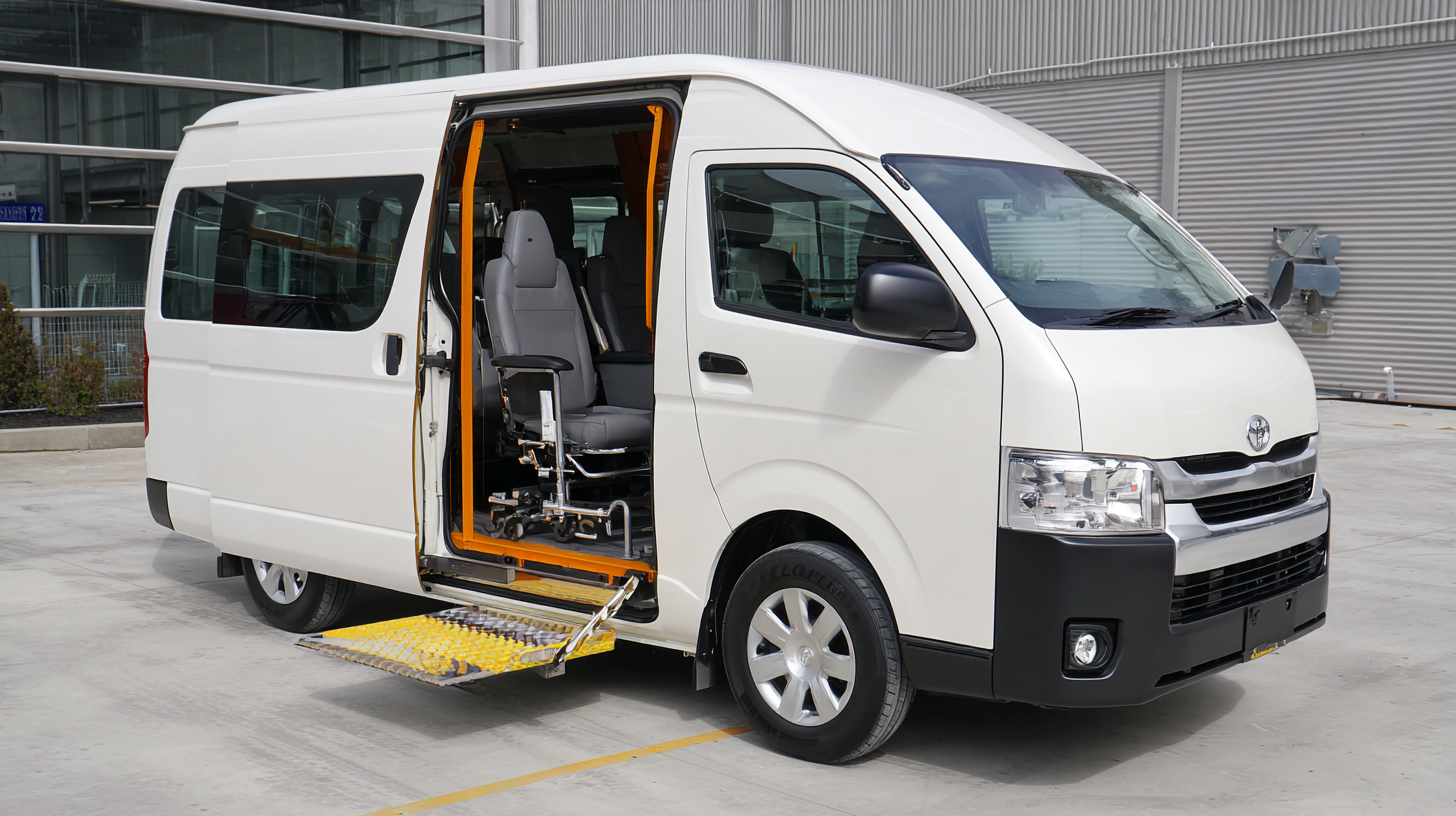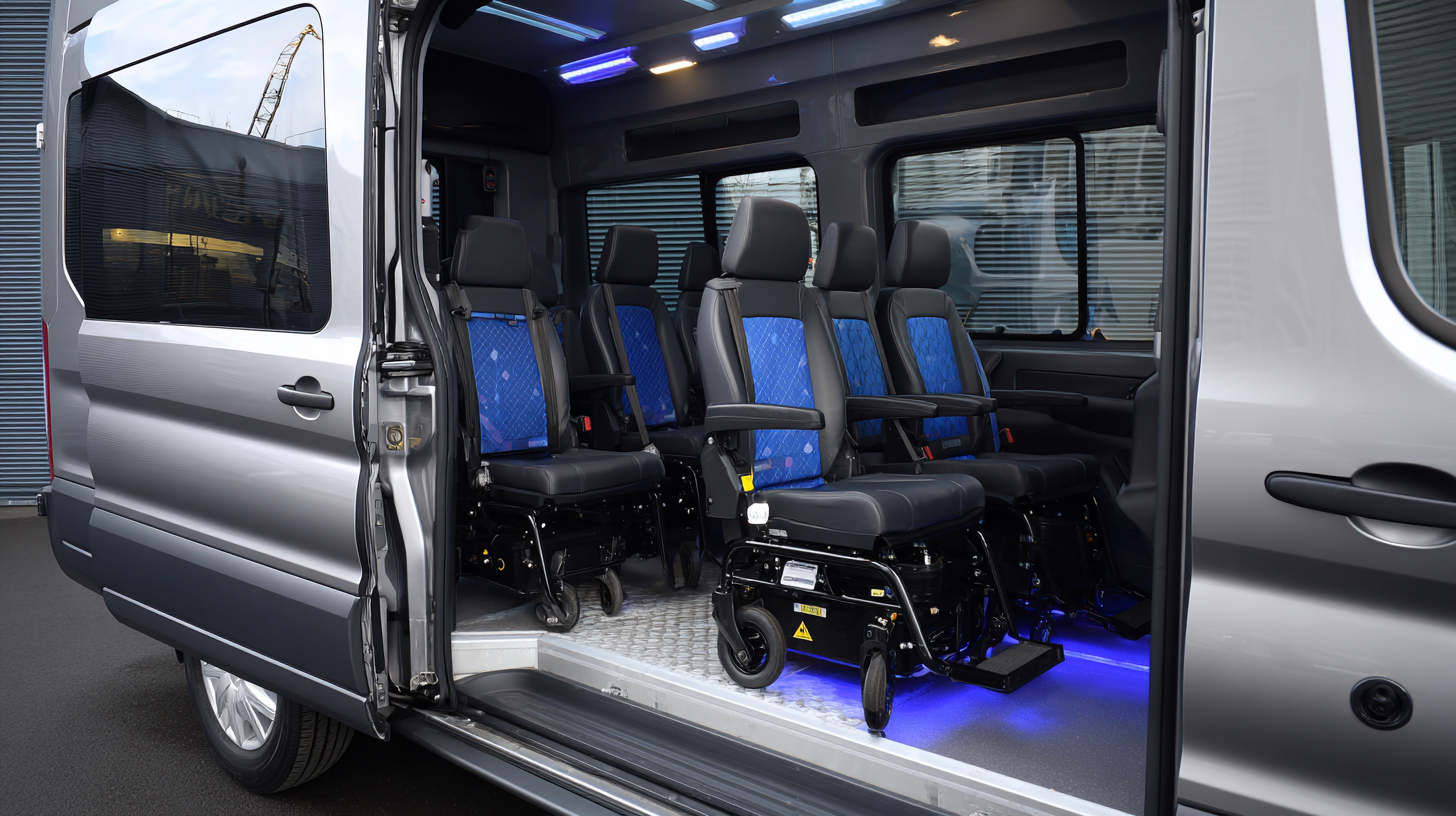Navigating Exports and Certification for the Best Wheelchair Accessible Vehicles
The global demand for wheelchair accessible vehicles (WAVs) has seen a remarkable increase, driven by the growing awareness of accessibility issues and an aging population. According to a report by Allied Market Research, the WAV market is projected to reach $21.2 billion by 2027, with a compound annual growth rate (CAGR) of 10.6% from 2020 to 2027. This surge presents both opportunities and challenges for manufacturers, especially in navigating the complexities of exports and certification. As industry standards evolve, ensuring compliance with international regulations becomes critical for maintaining market competitiveness. The superior manufacturing capabilities of world-class Chinese factories, known for their innovative technologies and cost-effective production, can play a pivotal role in providing outstanding WAV solutions to meet this burgeoning demand. This blog will explore how to effectively navigate the export landscape and certification processes for wheelchair accessible vehicles, ensuring that manufacturers are well-equipped to deliver high-quality products to the global market.

Understanding the Importance of Certification for Wheelchair Accessible Vehicles
Certification plays a crucial role in the world of wheelchair accessible vehicles (WAVs), ensuring that these vehicles meet specific standards for safety, accessibility, and functionality. Without proper certification, consumers may face significant risks, including inadequate structural integrity or failure to accommodate essential wheelchair features.
Certification acts as a guarantee that the vehicle has undergone rigorous testing and evaluation, confirming its reliability for users with mobility challenges.

In addition to safety, certification enhances the overall quality of wheelchair accessible vehicles. Manufacturers who prioritize certification are more likely to adhere to industry guidelines and best practices. This focus on compliance not only benefits end-users but also fosters trust and transparency within the market.
As consumers become more informed, they are increasingly prioritizing certified vehicles, recognizing the value of assurance that the chosen model is designed for their specific needs. Thus,
certification becomes not just a requirement but a vital component of marketing and consumer trust in wheelchair accessible vehicles.
Key Regulations for Exporting Wheelchair Accessible Vehicles
When considering the export of wheelchair accessible vehicles (WAVs), understanding the key regulations is essential for compliance and successful market entry. Different countries have varying requirements regarding safety standards, emissions regulations, and accessibility features. It’s crucial to research the specific regulations for the destination market to ensure that the vehicles meet local criteria. This not only aids in avoiding delays and penalties but also enhances the vehicle's marketability.
Tip: Establish a comprehensive checklist of the regulations in your target market, including documentation requirements such as certifications of conformity and compliance with standards like ISO 9001. This proactive approach can simplify the process and speed up the approval timeline.
Another important aspect to consider is the certification process for WAVs. Many international markets require vehicles to undergo rigorous testing and certification to verify their accessibility features. This may involve assessments of ramps, lift systems, and safety harnesses to ensure they meet the needs of users.
Tip: Collaborate with local experts or certification bodies in the destination country to navigate these processes effectively. Their insights can provide clarity on the necessary procedures and help you avoid common pitfalls in vehicle certification.
Step-by-Step Guide to Navigating Export Certification Process
Navigating the export certification process for wheelchair accessible vehicles can be daunting, but breaking it down into manageable steps makes it more approachable. First, understand the specific regulations that apply to your vehicle type and destination country. Each country has its own certification standards, which may include safety, emissions, and accessibility features.
Research these requirements thoroughly to ensure compliance before proceeding with the export process.
Once you have a clear understanding of the regulations, gather all necessary documents, including the vehicle’s technical specifications, compliance certificates, and any relevant modifications for accessibility. It’s crucial to engage with an experienced export consultant or legal advisor who specializes in vehicle certifications to ensure that your paperwork is accurate and complete. This will help minimize delays and potential rejections from customs or certification authorities.
After preparing your documents, submit them to the appropriate regulatory body for review. Be prepared for inspections or additional assessments, as these may be required to validate the vehicle's compliance with accessibility standards. By following this step-by-step guide, you can navigate the complexities of export certification and successfully deliver wheelchair accessible vehicles to those in need.
Best Practices for Ensuring Vehicle Compliance and Safety Standards
When it comes to ensuring vehicle compliance and safety standards for wheelchair accessible vehicles (WAVs), adherence to relevant regulations is paramount. Manufacturers must stay informed about local, national, and international guidelines that govern the design, modification, and use of these vehicles. Compliance with standards such as the Americans with Disabilities Act (ADA) and the National Highway Traffic Safety Administration (NHTSA) regulations not only guarantees the safety of the users but also enhances the marketability of the vehicles. Regular audits and assessments should be conducted to ensure all components—ramp mechanisms, securement systems, and seat integrity—meet the established criteria.
In addition to regulatory compliance, best practices in quality control are vital for optimal vehicle safety. This involves a thorough inspection of the production processes, from the sourcing of materials to the final assembly. Employing qualified personnel who understand the unique needs of WAV users can lead to better design outcomes. Furthermore, incorporating user feedback into the development phase can help identify potential safety issues and usability challenges before vehicles hit the market. By fostering a culture of safety and compliance, manufacturers can contribute to a more accessible world for individuals with disabilities while ensuring the success of their products.
Resources and Support for Exporting Wheelchair Accessible Vehicles
Exporting wheelchair accessible vehicles (WAVs) can be a complex process, but several resources and support systems can help streamline this journey. First, it’s essential to understand the regulations and standards in your target market. Organizations such as the World Health Organization offer guidelines that outline the required specifications for WAVs, ensuring safety and accessibility. Partnering with local experts or consultants familiar with those regulations can be invaluable in navigating these requirements effectively.

In addition to regulatory support, various government programs and non-profit organizations provide resources for manufacturers and exporters in the mobility sector. These organizations often offer assistance in the form of grants, training, and networking opportunities. Utilizing platforms like trade shows and automotive expos can also open doors to new partnerships, allowing businesses to connect with potential buyers and distributors who specialize in accessible vehicles. Engaging with these resources not only enhances understandings of market demands but also promotes the development and export of innovative WAV solutions tailored to diverse needs.